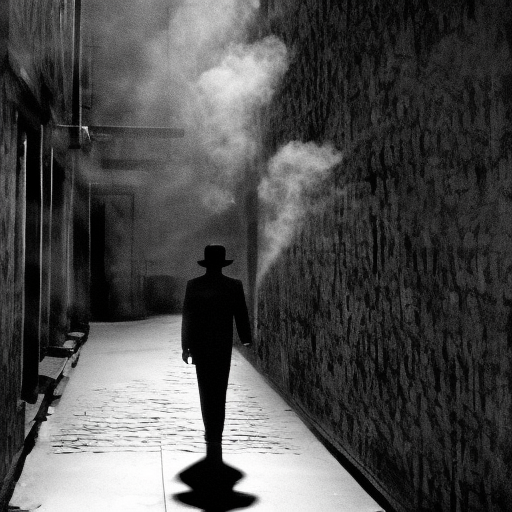Noir: A Dark and Atmospheric Genre
Noir is a genre of fiction, film, and art that emerged in the early 20th century. It is characterized by its dark and atmospheric style, often depicting a world of crime, corruption, and moral ambiguity. The term “noir” is derived from the French word for “black,” which perfectly captures the genre’s bleak and shadowy aesthetic.
The Origins of Noir
Noir originated in the hardboiled crime fiction of the 1920s and 1930s, with authors such as Dashiell Hammett and Raymond Chandler. These writers introduced flawed and morally ambiguous protagonists, often private detectives or criminals, who navigated a world filled with corruption and violence.
In the 1940s and 1950s, noir found its way onto the silver screen. Films like “Double Indemnity” (1944) and “The Maltese Falcon” (1941) became iconic examples of the genre. These movies featured moody lighting, low-angle shots, and morally complex characters, all of which became hallmarks of noir.
The Elements of Noir
Noir is characterized by several key elements that contribute to its distinctive style and atmosphere:
1. Visual Style: Noir films are known for their striking visual compositions. Directors often use high contrast lighting, deep shadows, and unusual camera angles to create a sense of unease and tension. The use of chiaroscuro lighting, with stark contrasts between light and dark, is particularly common in noir.
2. Moral Ambiguity: Noir stories often feature morally ambiguous characters who are neither entirely good nor entirely bad. Protagonists are frequently flawed and driven by their own desires or vices. This moral ambiguity adds complexity and depth to the narrative.
3. Femme Fatale: A recurring character archetype in noir is the femme fatale, a seductive and manipulative woman who leads the protagonist into dangerous situations. The femme fatale is often portrayed as both alluring and dangerous, using her sexuality to manipulate men and further her own agenda.
4. Urban Setting: Noir is typically set in gritty urban environments, such as Los Angeles or New York City. These settings reflect the dark underbelly of society and provide a backdrop for the criminal activities and moral decay depicted in the genre.
5. Narrative Structure: Noir stories often employ non-linear or fragmented narrative structures, with frequent use of flashbacks and voice-over narration. These techniques add to the sense of mystery and uncertainty that permeates the genre.
The Influence of Noir
Noir has had a significant influence on various art forms beyond film and literature. Its dark and atmospheric style has inspired countless artists, photographers, and musicians. The genre’s themes of crime, corruption, and moral ambiguity continue to resonate with audiences today.
In the realm of visual art, noir has influenced movements such as film noir photography and neo-noir painting. Artists like Edward Hopper and Gregory Crewdson have drawn inspiration from the genre’s moody lighting and urban landscapes to create their own atmospheric works.
In music, noir has influenced genres such as jazz and blues. The melancholic and introspective nature of noir aligns with the emotional depth found in these musical styles. Artists like Billie Holiday and Tom Waits have been associated with the noir aesthetic, with their haunting and evocative songs capturing the essence of the genre.
The Enduring Appeal of Noir
Despite being rooted in a specific time period, noir continues to captivate audiences today. Its themes of moral ambiguity and the dark side of human nature are timeless and resonate with people across generations. The genre’s distinctive visual style and atmospheric storytelling have made it a lasting influence on art and culture.
Whether in literature, film, or art, noir remains a powerful and evocative genre. Its exploration of the human psyche and the complexities of morality continue to fascinate and intrigue audiences, making it a genre that will endure for years to come.












